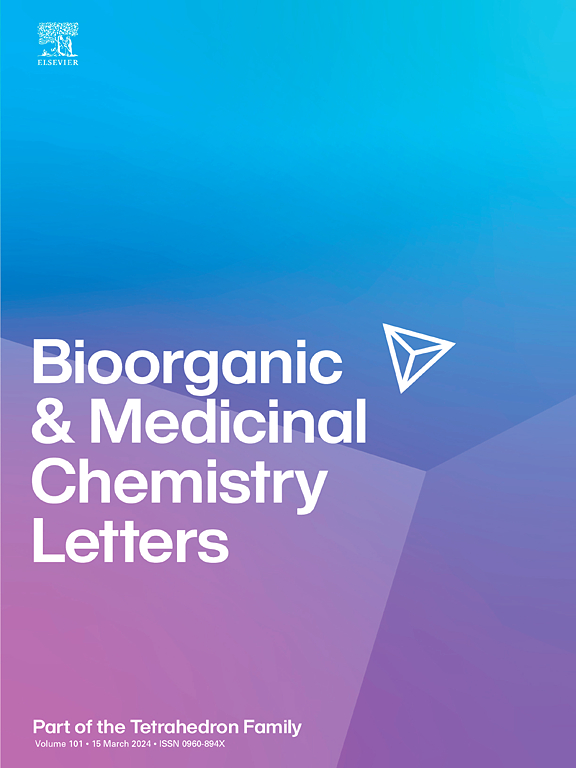用于卵巢癌特异性靶向治疗的适体修饰的gsh可降解的厚朴酚聚前药纳米颗粒。
IF 2.5
4区 医学
Q3 CHEMISTRY, MEDICINAL
引用次数: 0
摘要
Honokiol (HK)是从木兰属植物中分离出来的一种多酚,是传统中草药的一种成分,可以有效抑制包括卵巢癌在内的各种肿瘤的生长。然而,其水溶性低,缺乏肿瘤靶向能力,极大地阻碍了HK的临床应用。本文以HK为骨架制备了对谷胱甘肽(GSH)敏感的HK多前药。然后将epcam特异性适配体和聚乙二醇(PEG)偶联到HK多前药上,并将所得多前药在水中组装成纳米颗粒(NPs)。HK多前体药物形成的NPs具有高载药量和谷胱甘肽反应性药物释放。此外,优化后的HK多前药NPs (A/P-PHK NP40),由适配体修饰和peg修饰的前药在饲料摩尔比为2:3时形成,具有最高的靶向过表达epcam的卵巢癌细胞的能力。与游离HK和对照HK NPs相比,A/P-PHK NP40在卵巢癌细胞中也表现出更大的细胞生长抑制作用。总之,本研究报道了一种基于微环境反应性多前药的HK递送新策略,为卵巢癌靶向治疗提供了一种潜在的方法。本文章由计算机程序翻译,如有差异,请以英文原文为准。

Aptamer-modified GSH-degradable honokiol polyprodrug nanoparticles for ovarian cancer-specific targeting therapy
Honokiol (HK) is a polyphenol isolated from the Magnolia genus, a component of traditional Chinese herbal medicine, which can effectively suppress the growth of various tumors, including ovarian cancer. However, its low water solubility and lack of tumor-targeting ability have greatly hindered the clinical application of HK. Herein, a glutathione (GSH)-sensitive HK polyprodrug was prepared using HK as the backbone. An EpCAM-specific aptamer and poly(ethylene glycol) (PEG) were then conjugated to the HK polyprodrug, and the resulting polyprodrug was assembled into nanoparticles (NPs) in water. The HK polyprodrug-formed NPs achieved high drug loading and GSH-responsive drug release. Moreover, after optimization, HK polyprodrug NPs (A/P-PHK NP40), formed by aptamer-modified and PEG-modified prodrug at a feed molar ratio of 2: 3, exhibited the highest ability to target EpCAM-overexpressing ovarian cancer cells. A/P-PHK NP40 also demonstrated a greater cell growth inhibition effect in ovarian cancer cells compared to free HK and control HK NPs. All in all, this work reported a novel strategy for HK delivery based on microenvironment responsiveness polyprodrug, which provided a potential method for ovarian cancer targeting therapy.
求助全文
通过发布文献求助,成功后即可免费获取论文全文。
去求助
来源期刊
CiteScore
5.70
自引率
3.70%
发文量
463
审稿时长
27 days
期刊介绍:
Bioorganic & Medicinal Chemistry Letters presents preliminary experimental or theoretical research results of outstanding significance and timeliness on all aspects of science at the interface of chemistry and biology and on major advances in drug design and development. The journal publishes articles in the form of communications reporting experimental or theoretical results of special interest, and strives to provide maximum dissemination to a large, international audience.

 求助内容:
求助内容: 应助结果提醒方式:
应助结果提醒方式:


